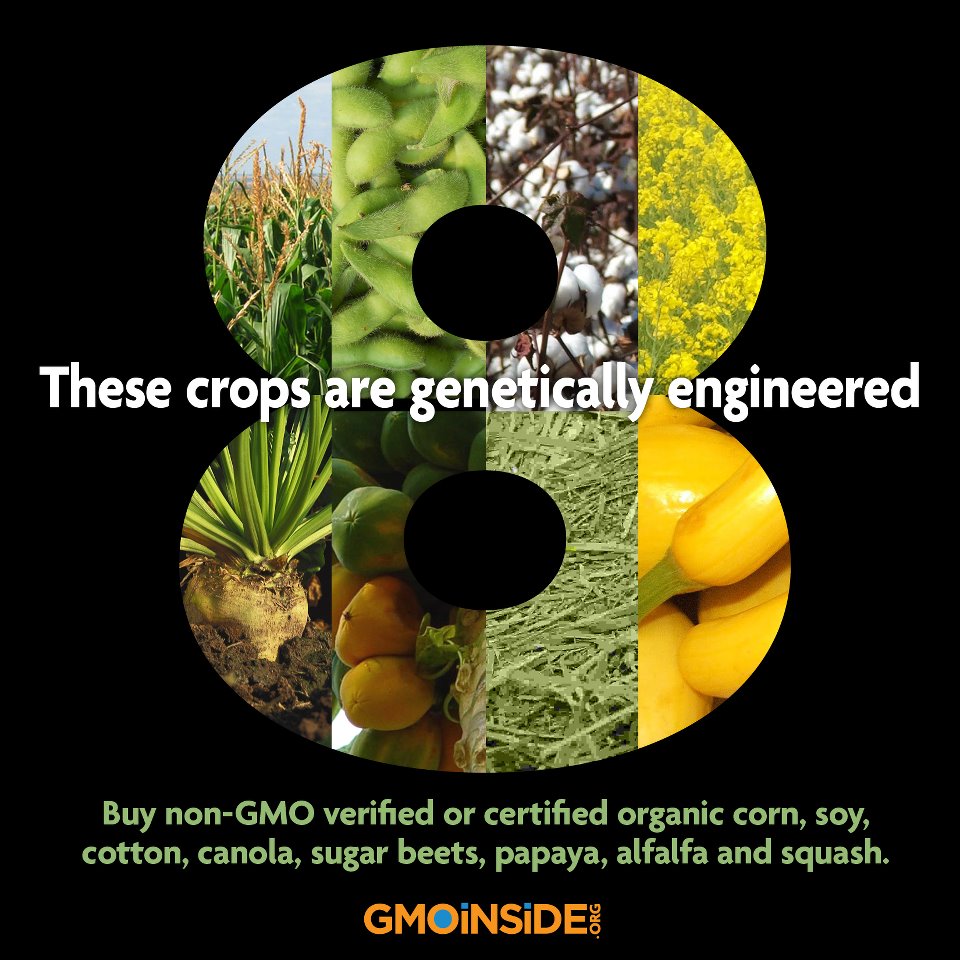The process of creating a transgenic organism (whether plant or animal) is not a natural process. There are many steps involved that require the invasion of a cell usually through a bacteria or virus that has been altered with the desired gene. The plant or animal that is being modified will have the altered bacteria or virus forced into the nucleus of its cells.
Here is a great video that explains the process.
The main question is why have biotech companies created transgenic crops?
The original idea is based around improving crop yields. Whether or not yields have even been improved is up for debate, but what is for sure is that the biotech companies have created a profit generating machine by patenting seeds (live organisms which can replicate and cross-contaminate). The most prolific transgenic seeds are those that have been engineered to be resistant to a specific herbicide: Monsanto's Roundup Ready Herbicide. This means that farmers can spray massive amounts of Roundup Ready Herbicide without fear that it will destroy the crop. Of course, Monsanto is the company that has both patented the seeds and the herbicide. How convenient? The company is making money selling farmers seeds and the herbicide. So, now we've got transgenic food that is being sprayed with a massive amount of herbicide.
There is also Monsanto's Bt corn which is engineered to have an insecticide built into its DNA, which can liquify the stomach linings of insects trying to eat the crop. What does it do to humans? We don't know.
There are a number of others, but Monsanto owns 90% of all transgenic crops and those are the two big ones. Do not be fooled by Monsanto's claims that it is trying to feed the world. It is the chemical company that brought us Agent Orange and it is mainly concerned with profits. Otherwise, Monsanto would perform the necessary tests to determine that it is actually safe to feed the world transgenic foods.
For those of you who may not know much about transgenic foods, the following may come as a shock:
***In the U.S.A., transgenic foods are in as much as 80% of all conventional processed foods***
The following are considered high risk transgenic crops:
- Alfalfa (first planting 2011)
- Canola (approx. 90% of U.S. crop)
- Corn (approx. 88% of U.S. crop in 2011)
- Cotton (approx. 90% of U.S. crop in 2011)
- Papaya (most of Hawaiian crop; approximately 988 acres)
- Soy (approx. 94% of U.S. crop in 2011)
- Sugar Beets (approx. 95% of U.S. crop in 2010)
- Zucchini and Yellow Summer Squash (approx. 25,000 acres)
- Also, Animal Products due to contamination of feed and rBGH (Bovine Growth Hormone which is a transgenic hormone inserted into conventional cows)
[statistics from the Non GMO Project: http://www.nongmoproject.org/learn-more/]
Essentially, this means processed foods. Canola, corn, soy and sugar (sugar beets) make up the majority of ingredients in conventional processed foods. Also, any actual corn, soy or canola oil that is non-organic and not certified as Non-GMO is almost certainly transgenic. Alfalfa is poised to become a big factor because it is both easily spread and fed to livestock.
Transgenic crops have been around for well over a decade, which means that almost all of us have, at one time or another, consumed transgenic foods without our knowledge or consent. This is unique to the U.S.A. In the European Union, transgenic crops are banned. Even Russia and China require labeling of transgenic food.
Despite their proliferation in American diets, very little testing has been done on the safety of transgenic crop consumption. The big biotech companies have a lot of money and have managed to lobby the government to reduce regulations and treat transgenic crops as normal. Which means that they've entered our supermarkets and our stomachs without extensive testing, causing the public at large to be the biotech industry's own personal guinea pigs. I, for one, do not appreciate that these companies have placed profits over public health.

















